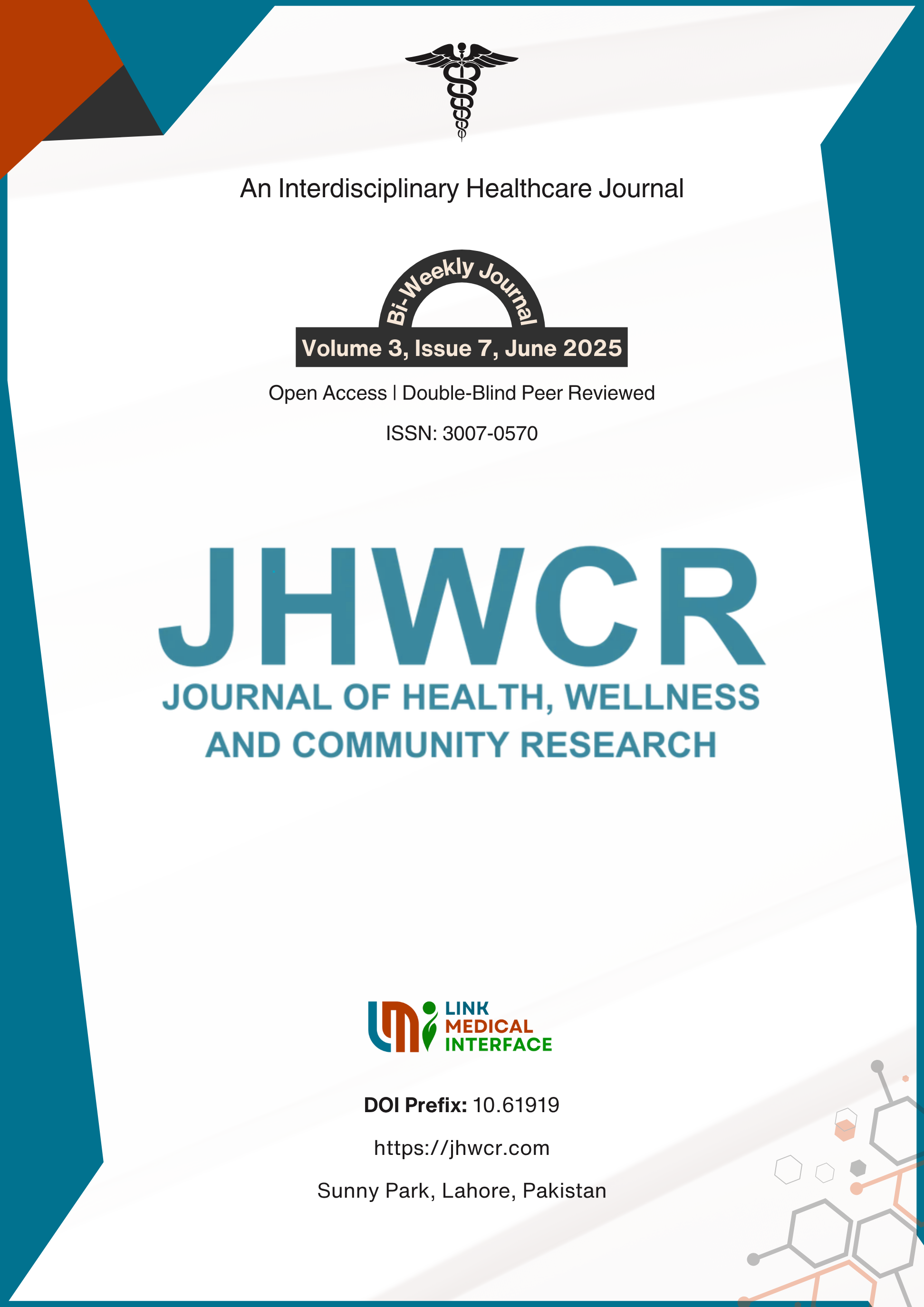Frequency of Iron Deficiency Anemia in Children Presenting Breath-Holding Spell at DHQ Mirpur Azad Kashmir
DOI:
https://doi.org/10.61919/ww7tk021Keywords:
Iron deficiency anemia, Breath-holding spells, Pediatrics, Hemoglobin, Serum ferritin, Cyanotic spells, PakistanAbstract
Background: Breath-holding spells (BHS) are common non-epileptic events in young children, often triggered by emotional stress or minor trauma, and may present with alarming features such as transient apnea, cyanosis or pallor, and loss of consciousness. Emerging evidence suggests a strong association between BHS and iron deficiency anemia (IDA), yet region-specific data from underserved areas remain limited. Objective: To determine the frequency of iron deficiency anemia among children presenting with breath-holding spells at Divisional Headquarters Teaching Hospital, Mirpur, Azad Jammu and Kashmir. Methods: A cross-sectional study was conducted from July to December 2024, enrolling 150 children aged 6 months to 6 years presenting with BHS. Participants with malnutrition, chronic illness, recent iron therapy or blood transfusion were excluded. Demographic and clinical data were collected, and blood samples were analyzed for hemoglobin, serum ferritin, and mean corpuscular volume. IDA was defined as hemoglobin <10 g/dL and ferritin <12 ng/mL. Descriptive statistics and chi-square tests were used to analyze prevalence and associations with age and gender. Results: IDA was present in 62.0% of the cohort, with 58.7% classified as moderate and 3.3% as severe. No statistically significant association was observed between IDA prevalence and age (p=0.53) or gender (p=0.59). Conclusion: Iron deficiency anemia is highly prevalent in children with BHS regardless of age or gender, supporting the need for routine iron status screening in this population to enable timely management and potentially reduce episode frequency.
Downloads
Published
Issue
Section
License
Copyright (c) 2025 Journal of Health, Wellness and Community Research

This work is licensed under a Creative Commons Attribution 4.0 International License.


